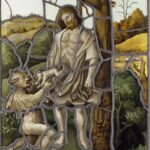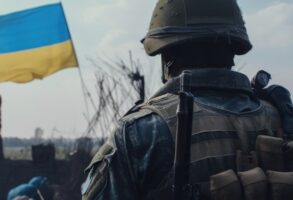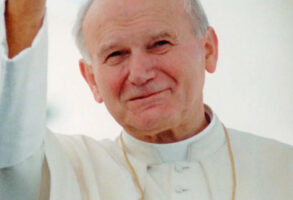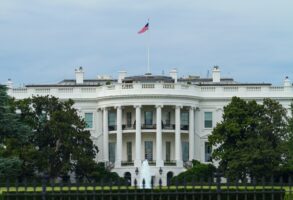Published May 12, 2015
“. . . they only heard it said, ‘He who once persecuted us is now preaching the faith he once tried to destroy’. . . .” – Galatians 1:23
Has Cuban president Raúl Castro, once described by a senior Vatican official as a man with a soul “like a stone,” had a Damascus Road experience like Saint Paul, such that he’s now preaching the kind of politics he had long tried to destroy? Fidel Castro’s little brother and political heir was certainly suggesting as much, in remarks to the press after his May 10 visit at the Vatican with Pope Francis.
The pope “is a Jesuit, and I, in some way, am too,” Raúl said; “I always studied in Jesuit schools.” And when Pope Francis comes to Cuba in September, just before his visit to Washington, New York, and Philadelphia, “I promise to go to all his Masses, and with satisfaction.” And then the money line: “I read all the speeches of the pope, his commentaries, and if the pope continues this way, I will go back to praying and go back to Church, and I’m not joking.”
Well, perhaps not. One can always hope. But Raúl Castro, no fool, is certainly spinning. And rather more is going to be required of him if his protestations of having taken an “important step” by allowing religious believers some role in the governing Cuban Communist party — which he’d like the Church and the world to believe is the first step in a break with totalitarianism — are to be taken seriously.
What might the evidence of a genuine “conversion” on the part of Raúl Castro and the totalitarian regime he leads look like?
• The Cuban government immediately releases all political prisoners, including the hundreds arrested on political charges in the months since the regime’s rapprochement with the Obama administration.
• The Cuban government disbands the neighborhood-based Committees for the Defense of the Revolution — the tentacles of a nationwide network of surveillance, betrayal, and repression reminiscent of life under Hitler or Stalin.
• President Castro publicly apologizes to the Ladies in White — the brave women who protest every Sunday against the imprisonment of their relatives and who are regularly beaten up by Castroite goons — and invites Berta Soler, the Ladies’ leader, to sit in a place of honor at the pope’s Mass in Havana.
• The regime closes the Museum of the Revolution in Havana and disposes of the burlap bag that once carried the corpse of Che Guevara; the museum displays the bloodstained bag in a glass case, an obscene, sacrilegious imitation of the Shroud of Turin.
• The Cuban government withdraws the internal-security “consultants” it has seeded throughout Latin America in support of repressive regimes in places like Venezuela and Ecuador.
• The Cuban government ratifies the International Covenant on Civil and Political Rights and amends the Cuban constitution so that it no longer subordinates basic civil rights to the leading role of the Communist party.
• The regime opens access to the Internet for everyone.
• The Cuban press, print and online, is liberated; writers and editors are no longer subjected to harassment and imprisonment for criticizing the government.
• The government permits newspapers and magazines from around the world to be openly distributed throughout Cuba.
• Workers in enterprises owned by foreign businesses receive their wages directly from their employers, rather than through the government, thus eliminating the government’s (substantial) cut.
• Entrepreneurs running small businesses like restaurants, cabs, and other tourist services are no longer required to fork over large sums of money to the government on a regular basis.
• Religious communities and institutions are allowed to live their lives by their own standards, openly propose the truths they profess, build new facilities, and work without hassle with co-religionists from abroad.
• Cubans may travel freely inside and outside their country.
• Pro-democracy nongovernmental organizations from around the world are welcome to work in Cuba.
• The government announces a national roundtable at which all interested parties will meet for several months to discuss Cuba’s political and economic future; the safety of all participants is guaranteed, and foreigners from long-established democracies are invited to observe and even offer counsel.
The list could go on and on, but perhaps these minimal benchmarks of a genuine “conversion” illustrate the point: It will take a lot more than references to the Jesuit Old Boys’ Club to persuade any reasonable observer that, thanks to Pope Francis, Raúl Castro is a changed man who wants to spend his remaining days repairing the colossal damage he, his brother, and their accomplices have done to the physical, social, and moral fabric of Cuba.
And until those steps are taken, it would be prudent for all concerned to work on the assumption that the Castros and their allies have not fundamentally changed, except to become a bit more clever. The transition they now seem to imagine has elements of post-Communist Russia and post-Mao China in it: The Russian angle involves the continued role of the internal-security services in maintaining the regime during a period of economic liberalization; the Chinese side involves the party and military as principal economic actors, thus ensuring that the fruits of any economic liberalization redound to the benefit of those currently in power. None of this has anything to do with the free and just society envisioned by Catholic social doctrine, or by Pope Francis.
Raúl Castro’s promise to attend Francis’s Masses in Cuba in September calls to mind January 1998, when John Paul II visited Cuba and celebrated Mass in, among several other places, Santiago de Cuba, the principal city in the old Oriente province and, as home to Fidel and Raúl Castro, the romantic heart of the Castro revolution. It was a blazing hot day, but a vast crowd had gathered for the open-air Mass, both to pray with John Paul and to venerate Cuba’s national icon, Our Lady of Charity of El Cobre, whose statue was going to be publicly displayed for the first time in decades. Raúl Castro, evidently concerned by the outpouring of affection that the pope had already received in Havana, Santa Clara, and Camagüey, unexpectedly showed up and sat in the front row, arms crossed and a scowl on his face.
At the beginning of Mass, Archbishop Pedro Meurice Estiú welcomed the pope on behalf of his people and lambasted the “false messianism” of those who had “confused the fatherland with a single party, the nation with the historical process we have lived through during the last few decades, and culture with an ideology.” John Paul’s homily lifted up those Cuban cultural and political heroes who had chosen “the way of freedom and justice as the foundation of the people’s dignity” and made a strong plea for a Church that, by defending religious freedom, “defends the freedom of every individual, of families, of different social units, which are living realities with a right to their own sphere of autonomy and sovereignty.” The throng responded with cries of Libertad! Libertad! Raúl, looking decidedly unhappy, returned to Havana, as did John Paul, who spent the evening at a prayer service held in a leprosarium. As for Archbishop Meurice, the electricity in his residence mysteriously disappeared for some days after the pope’s visit to his diocese.
Will Pope Francis bring a similar message to Cuba in September: a call to national renewal through a reclamation of Cuba’s authentic history and culture, traduced for half a century by Communism? Like John Paul, Francis will almost certainly call on Cuba to open itself to the world, and the world to open itself to Cuba. It would be a splendid gesture of solidarity if the Holy Father met with the Ladies in White. And in his discussions with the bishops of Cuba — who are often thought of as analogous to the Polish bishops under Communism, but who are in fact in a far more difficult situation, given the weakness of Cuban Catholicism — I’d expect Francis to challenge the Church to both build and resist: to rebuild its institutional strength while pressing the regime for genuine civil, political, and economic liberties.
Such a strategy would make for a steady, constant testing of the extent of Raúl Castro’s “conversion” — and the testing would take place under the patronage, and protection, of a pope whom Raúl clearly wants in his corner, for whatever reasons.
— George Weigel is Distinguished Senior Fellow of Washington’s Ethics and Public Policy Center, where he holds the William E. Simon Chair in Catholic Studies.








